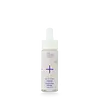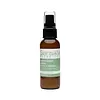What's inside
What's inside
 Key Ingredients
Key Ingredients

 Benefits
Benefits

 Concerns
Concerns

 Ingredients Side-by-side
Ingredients Side-by-side

Water
Skin ConditioningAloe Barbadensis Leaf Juice
Skin ConditioningGlycerin
HumectantOlea Europaea Fruit Oil
MaskingPrunus Armeniaca Kernel Oil
MaskingPolyglyceryl-6 Stearate
EmollientBakuchiol
AntimicrobialArgania Spinosa Kernel Oil
EmollientSodium Hyaluronate
HumectantHibiscus Sabdariffa Flower Extract
Skin ConditioningAdansonia Digitata Pulp Extract
EmollientBenzyl Alcohol
PerfumingXanthan Gum
EmulsifyingPolyglyceryl-6 Behenate
Emulsion StabilisingBenzoic Acid
MaskingTocopherol
AntioxidantSodium Phytate
Dehydroacetic Acid
PreservativeHelianthus Annuus Seed Oil
EmollientParfum
MaskingCitronellol
PerfumingLinalool
PerfumingWater, Aloe Barbadensis Leaf Juice, Glycerin, Olea Europaea Fruit Oil, Prunus Armeniaca Kernel Oil, Polyglyceryl-6 Stearate, Bakuchiol, Argania Spinosa Kernel Oil, Sodium Hyaluronate, Hibiscus Sabdariffa Flower Extract, Adansonia Digitata Pulp Extract, Benzyl Alcohol, Xanthan Gum, Polyglyceryl-6 Behenate, Benzoic Acid, Tocopherol, Sodium Phytate, Dehydroacetic Acid, Helianthus Annuus Seed Oil, Parfum, Citronellol, Linalool
Water
Skin ConditioningAloe Barbadensis Leaf Juice
Skin ConditioningCetearyl Glucoside
EmulsifyingSorbitan Olivate
EmulsifyingSimmondsia Chinensis Seed Oil
EmollientTerminalia Ferdinandiana Fruit Extract
AntioxidantOenothera Biennis Oil
EmollientRosa Rubiginosa Seed Oil
EmollientButyrospermum Parkii Butter
Skin ConditioningSodium Citrate
BufferingHippophae Rhamnoides Oil
EmollientArgania Spinosa Kernel Oil
EmollientTocopherol
AntioxidantBenzyl Alcohol
PerfumingBenzoic Acid
MaskingDehydroacetic Acid
PreservativeCitric Acid
BufferingXanthan Gum
EmulsifyingSchisandra Chinensis Fruit Extract
Skin ConditioningCentella Asiatica Extract
CleansingGarcinia Mangostana Fruit Extract
Skin ConditioningCedrus Atlantica Wood Oil
PerfumingPelargonium Graveolens Oil
MaskingBoswellia Carterii Oil
MaskingCitronellol
PerfumingSantalum Album Oil
MaskingLimonene
PerfumingGeraniol
PerfumingWater, Aloe Barbadensis Leaf Juice, Cetearyl Glucoside, Sorbitan Olivate, Simmondsia Chinensis Seed Oil, Terminalia Ferdinandiana Fruit Extract, Oenothera Biennis Oil, Rosa Rubiginosa Seed Oil, Butyrospermum Parkii Butter, Sodium Citrate, Hippophae Rhamnoides Oil, Argania Spinosa Kernel Oil, Tocopherol, Benzyl Alcohol, Benzoic Acid, Dehydroacetic Acid, Citric Acid, Xanthan Gum, Schisandra Chinensis Fruit Extract, Centella Asiatica Extract, Garcinia Mangostana Fruit Extract, Cedrus Atlantica Wood Oil, Pelargonium Graveolens Oil, Boswellia Carterii Oil, Citronellol, Santalum Album Oil, Limonene, Geraniol
Ingredients Explained
These ingredients are found in both products.
Ingredients higher up in an ingredient list are typically present in a larger amount.
Aloe Barbadensis Leaf Juice comes from leaves of the aloe plant. Aloe Barbadensis Leaf Juice is best known for helping to soothe sunburns. It is also anti-inflammatory, moisturizing, antiseptic, and can help heal wounds.
Aloe is packed with good stuff including Vitamins A, C, and E. These vitamins are antioxidants, which help fight free-radicals and the damage they may cause. Free-radicals are molecules that may damage your skin cells, such as pollution.
Aloe Barbadensis Leaf Juice also contains sugars. These sugars come in the form of monosaccharides and polysaccharides, folic acid, and choline. These sugars are able to help bind moisture to skin.
It also contains minerals such as calcium, 12 anthraquinones, fatty acids, amino acids, and Vitamin B12.
Learn more about Aloe Barbadensis Leaf JuiceYou may know this ingredient as argan oil. Argan Oil has antioxidant, hydrating, and soothing properties.
Studies have shown argan oil can help fight again radical damage from the sun. This makes it effective at preventing hyperpigmentation.
Large amounts of vitamin E found in argan oil helps the skin retain water. Argan oil also contains fatty acids such as linoleic acid, oleic acid, and palmitic acid. It is also a good source of lipids.
Another benefit of argan oil is skin-soothing. It can help reduce inflammation-related skin symptoms.
Argan Oil is effective at regulating sebum production in pores. This can make it effective at treating hormonal acne.
Traditionally, argan oil was used for its antibacterial and antifungal properties. However, argan oil contains fatty acids that may make it not fungal-acne safe.
Argan Trees are native to Morocco.
Learn more about Argania Spinosa Kernel OilBenzoic Acid is used to preserve and adjust the pH of products.
The antimicrobial property of Benzoic Acid helps elongate a product's shelf life. Its main role is to reduce fungi growth and is not found to be effective at fighting bacteria. Therefore Benzoic Acid is always added along with other preservatives.
In its pure form, Benzoic Acid looks like a white crystalline solid. It has slight solubility in water.
The name of Benzoic Acid comes from gum benzoin, which used to be the sole source of deriving this ingredient. Benzoic Acid is the most simple aromatic carboxylic acid.
Benzoic Acid is naturally occuring in strawberries, mustard, cinnamon, and cloves. It has a slight scent but is not considered to be a fragrance.
Learn more about Benzoic AcidBenzyl Alcohol is most commonly used as a preservative. It also has a subtle, sweet smell. Small amounts of Benzyl Alcohol is not irritating and safe to use in skincare products. Most Benzyl Alcohol is derived from fruits such as apricots.
Benzyl Alcohol has both antibacterial and antioxidant properties. These properties help lengthen the shelf life of products. Benzyl Alcohol is a solvent and helps dissolve other ingredients. It can also improve the texture and spreadability.
Alcohol comes in many different forms. Different types of alcohol will have different effects on skin. This ingredient is an astringent alcohol.
Using high concentrations of these alcohols are drying on the skin. They may strip away your skin's natural oils and even damage your skin barrier. Astringent alcohols may also irritate skin.
Other types of astringent alcohols include:
According to the National Rosacea Society based in the US, you should be mindful of products with these alcohols in the top half of ingredients.
Any type of sanitizing product will have high amounts of alcohol to help kill bacteria and viruses.
Learn more about Benzyl AlcoholCitronellol is used to add fragrance/parfum to a product. It is often derived from plants such as roses. In fact, it can be found in many essential oils including geranium, lavender, neroli, and more. The scent of Citronellol is often described as "fresh, grassy, and citrus-like".
Since the Citronellol molecule is already unstable, Citronellol becomes irritating on the skin when exposed to air.
Citronellol is a modified terpene. Terpenes are unsaturated hydrocarbons found in plants. They make up the primary part of essential oils.
Citronellol is not able to be absorbed into deeper layers of the skin. It has low permeability,
Citronellol is also a natural insect repellent.
Learn more about CitronellolDehydroacetic Acid is fungicide and bactericide. It is used as a preservative in cosmetics. Preservatives help elongate the shelf life of a product.
Dehydroacetic Acid is not soluble in water.
Tocopherol (also known as Vitamin E) is a common antioxidant used to help protect the skin from free-radicals and strengthen the skin barrier. It's also fat soluble - this means our skin is great at absorbing it.
Vitamin E also helps keep your natural skin lipids healthy. Your lipid skin barrier naturally consists of lipids, ceramides, and fatty acids. Vitamin E offers extra protection for your skin’s lipid barrier, keeping your skin healthy and nourished.
Another benefit is a bit of UV protection. Vitamin E helps reduce the damage caused by UVB rays. (It should not replace your sunscreen). Combining it with Vitamin C can decrease sunburned cells and hyperpigmentation after UV exposure.
You might have noticed Vitamin E + C often paired together. This is because it is great at stabilizing Vitamin C. Using the two together helps increase the effectiveness of both ingredients.
There are often claims that Vitamin E can reduce/prevent scarring, but these claims haven't been confirmed by scientific research.
Learn more about TocopherolWater. It's the most common cosmetic ingredient of all. You'll usually see it at the top of ingredient lists, meaning that it makes up the largest part of the product.
So why is it so popular? Water most often acts as a solvent - this means that it helps dissolve other ingredients into the formulation.
You'll also recognize water as that liquid we all need to stay alive. If you see this, drink a glass of water. Stay hydrated!
Learn more about WaterXanthan gum is used as a stabilizer and thickener within cosmetic products. It helps give products a sticky, thick feeling - preventing them from being too runny.
On the technical side of things, xanthan gum is a polysaccharide - a combination consisting of multiple sugar molecules bonded together.
Xanthan gum is a pretty common and great ingredient. It is a natural, non-toxic, non-irritating ingredient that is also commonly used in food products.
Learn more about Xanthan Gum